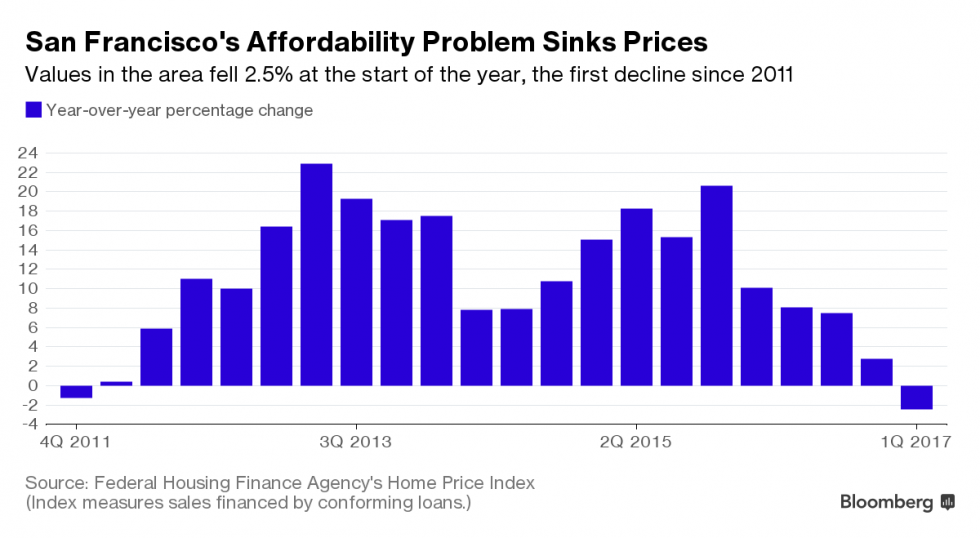San Francisco, which in recent years had the biggest home-price gain in the U.S., was the country’s weakest market in the first quarter, with values falling for the first time since 2011.
Single-family home prices in the region that includes San Francisco and San Mateo counties dropped 2.5 percent from a year earlier, the worst performance among the 100 largest U.S. metropolitan areas, according to an index released Wednesday by the Federal Housing Finance Agency. Grand Rapids, Michigan, a relatively affordable area where prices jumped 13.7 percent, had the biggest gain.
San Francisco is cooling after a booming technology industry, with its big salaries, fueled soaring values in recent years and made real estate unaffordable for most buyers in the market. Home prices rose 10 percent in last year’s first quarter and 15 percent in the first part of 2015, when its gains led the nation, FHFA data show. The area’s median home price in the first quarter was $1.1 million, making it the most expensive of the 100 largest metros, according to real estate website Trulia.
“We’re seeing signs that the housing market is slowing down,” Ralph McLaughlin, chief economist for Trulia, a unit of Zillow Group, says. “Homebuyers in the Bay Area have just been stymied by affordability fatigue.”
The FHFA index may leave out a large portion of buyers in the region. It only measures purchases financed with conforming loans, which in the San Francisco Bay area are capped at $636,150 — well below the median price of more than $1 million.
“Those homeowners who would qualify for conforming loans are the ones that have seen the biggest drops in inventory and the biggest increases in prices over the past five or six years,” McLaughlin says. “It’s no surprise that if there is any cohort impacted by a very frustrating home market, it’s going to be those buyers.”
CoreLogic Data
CoreLogic also released data Wednesday showing a decline in values. In April, the median price for all home sales in San Francisco County was $1.3 million, down 4 percent from a year earlier. The number of transactions fell 12 percent, according to the data provider, which doesn’t limit its research to homes bought with conforming loans.
Patrick Carlisle, an analyst at San Francisco market tracker Paragon Real Estate Group, says the first quarter isn’t a good gauge because relatively few homes are sold during the early part of the year. Carlisle says he sees a flattening on the higher end of the market, not on the lower end where inventory remains tight.
“San Francisco led the whole country in its recovery,” Carlisle
says. “It’s not surprising that the market that blasted off first
and rose the most is now the one that is cooling first.”




